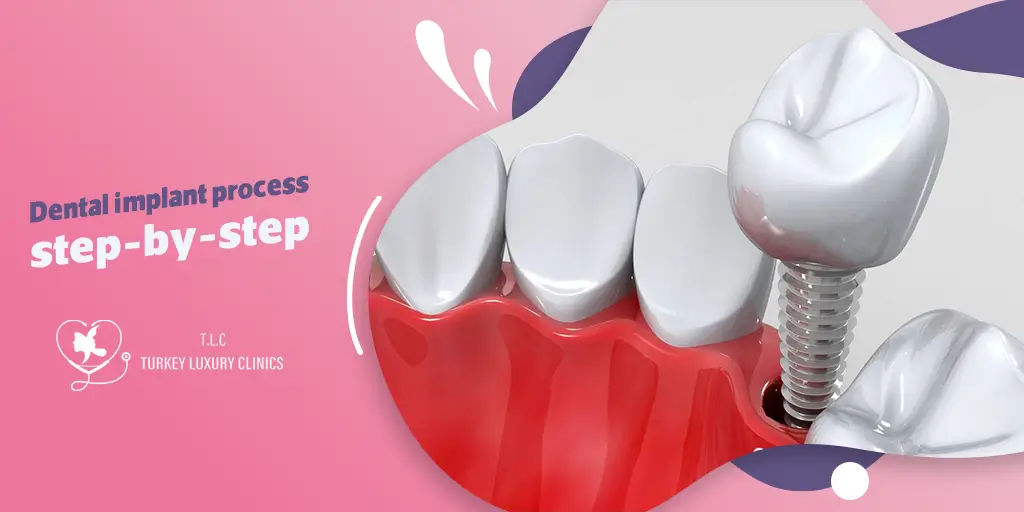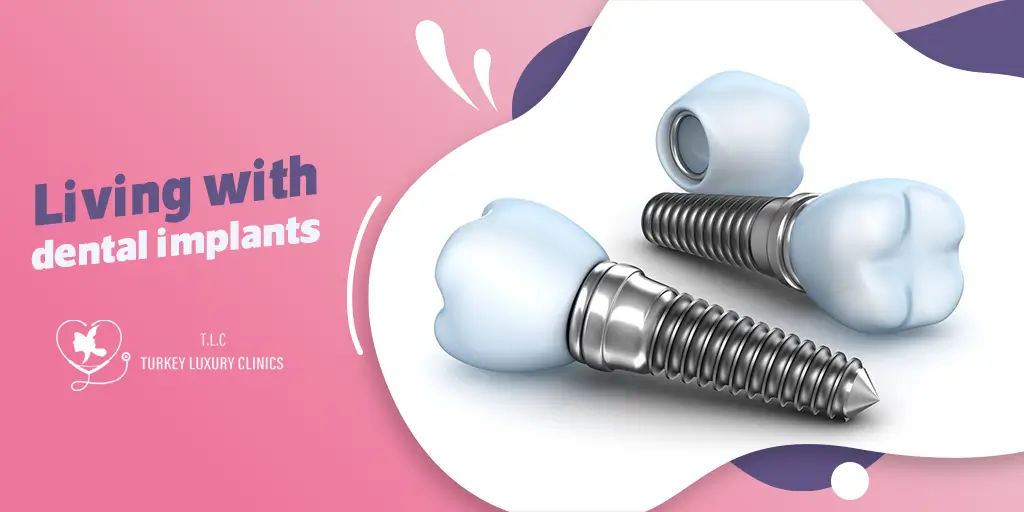- - Consultation
- - Dental Implant Process Step by Step
- - Treatment timeline
- - Tooth extraction
- - Summary of the step-by-step dental implant procedure
Dental implants are the ultimate solution for replacing lost tooth roots and securing artificial teeth, such as dental crowns, bridges, or dentures. These metal screws can confidently replace one or more missing teeth with ease. The surgical procedure for dental implantation depends on the type of implant and the condition of your jawbone. Dental implants offer an effective and reliable solution for restoring your smile. By understanding the dental implant process step-by-step, you can make informed decisions about your dental health. The process involves multiple steps, which we will go over in this article.
Consultation
To start, you will undergo a comprehensive dental examination, which may include dental X-rays and 3D images. Afterward, your medical history will be reviewed. Be sure to inform your doctor of any medical conditions, medications, including prescription and over-the-counter drugs, and supplements you are taking. Finally, you will discuss your treatment plan. This plan is tailored to your individual needs, taking into account factors such as the number of teeth that need replacement and the condition of your jawbone and remaining teeth.
Dental Implant Process Step by Step
1. Dental Implant Surgery
During dental implant surgery, the surgeon will:
- Give you anesthesia. You will be given a local anesthetic. This numbs your gums. If you have chosen sedation, the necessary medications will also be provided.
- Create an incision. After you feel at ease, your surgeon will make an incision in your gums to expose the bone where the dental implant will be placed.
- Prepare your jaw. Your surgeon will use specialized instruments to create an opening in your jawbone. The opening is widened to accommodate your new dental implant.
- Place the dental implant. Next, the surgeon will carefully place the dental implant into your jaw.
- Close the incisions. Finally, the surgeon will reposition your gums and close the incision using stitches.
2. Healing and Osseointegration
Dental implants function through osseointegration, a process where bone cells attach directly to the titanium surface, securing the implant into the jawbone. The implant material is biocompatible, meaning that it should not be rejected by your body during the fusing process, and it will become a permanent part of your jawbone. Typically, this process takes three to six months for the lower jaw and up to seven months for the upper jaw. However, smoking during this time can cause the entire process to fail. Therefore, it is imperative that you quit smoking beforehand.
3. Placing the abutment
When osseointegration is complete, you may need additional surgery to place the abutment - the piece to which the crown will eventually be attached. This minor procedure is usually done under local anesthesia on an outpatient basis. To place the abutment, your oral surgeon will first open your gum to expose the dental implant, then attach the abutment to the dental implant, and finally close the gum around, but not over, the abutment.
4. Choosing your new artificial teeth
After your gums have healed, additional impressions of your mouth and remaining teeth will be taken to create a realistic-looking artificial tooth, known as a crown. The placement of the crown depends on the strength of your jawbone to support the new tooth. Next, the dentist will make sure that your new teeth fit comfortably and look great in your mouth. Once the dental implant has fused with your jaw, it’s safe to add the restoration on top. Placing a dental restoration too soon can result in implant failure.
5. Recovery
Dental implants have a high success rate. Following the procedure, your surgeon will give you a detailed list of postoperative instructions and prescribe antibiotics to prevent infection. To make yourself more comfortable and reduce soreness, follow these steps:
- Take all medicines as prescribed by your doctor.
- For at least 72 hours, refrain from exercising or lifting heavy objects. This is because an elevated heart rate can lead to increased pain and swelling.
- Additionally, try chewing on the opposite side of your mouth to reduce pressure on the implants. If you have dental implants on both sides, it is recommended to eat soft foods for a few days and gradually add other foods as you feel comfortable.
- Brush and floss daily.
- Clean the implant site as instructed by your surgeon.
Treatment timeline
The duration of dental implant treatment can vary greatly, ranging from a single office visit to up to two years. The need for bone grafting and tooth extraction are the most common issues that can extend the dental implant timeline. We can complete the implant placement, attach the healing collar, and fit you with a temporary crown within hours. However, more complex procedures such as extractions and bone grafts may take several weeks. Additionally, please allow for a minimum of four months for osseointegration to occur.
Tooth extraction
Tooth extraction may be necessary due to severe damage or decay. It is a common dental procedure that can eliminate bacteria and improve your overall oral health. Your dentist will administer local anesthesia to numb the affected tooth and surrounding gum tissue. Using specialized dental instruments, they will gently loosen the tooth and carefully lift it from its socket. The recovery time after a tooth extraction depends on the complexity of your case. Although most people feel back to normal in just a few days, it usually takes several weeks for the jawbone to heal completely. You can return to routine activities within 48 to 72 hours. Therefore, if you’re planning on replacing the tooth with a dental implant, you’ll probably need to wait a few months to allow for full recovery.
Summary of the step-by-step dental implant procedure
Undertaking dental implant treatment is a significant decision. The planning and procedure can take several weeks to months, and it is not a quick-fix treatment. It is crucial to remember that implants can last for many years, even a lifetime, if cared for correctly. They are the closest to natural teeth that help you smile, chew properly and feel confident. If you are considering dental implants, schedule a consultation by contacting the office of Turkey Luxury Clinics.









.webp)
.webp)
.webp)
.webp)

